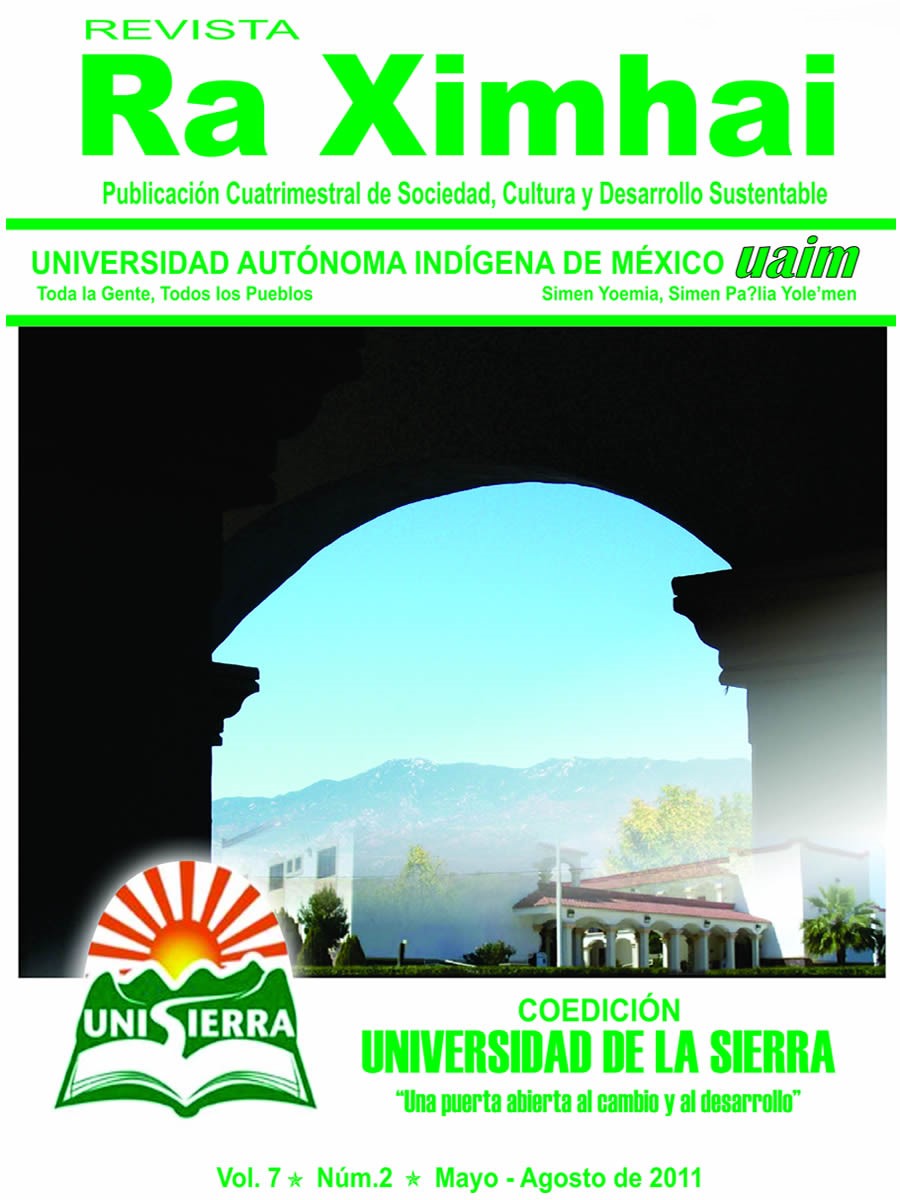Natural resource management in the Sierra de Sonora under the UMAFOR scheme. Case studies: Sierra Alta and Sierra la Madera
DOI:
https://doi.org/10.35197/rx.07.02.2011.03.mmKeywords:
productive activities, use value, ecosystems, environmental services, social actorsAbstract
This essay shows the management and value of natural resources from a social, sustainable and legal perspective, under the scheme of the Sustainable Forest Management Units (UMAFOR). During the month of March 2010, two participatory workshops were held, one at the UMAFOR Sierra La Madera and another at the UMAFOR Sierra Alta, belonging to the eastern sierra of the state of Sonora. An adaptation of the methodology of "Problems, causes and consequences" by Ramírez-García (2004) was used in the topics of conservation, productive activities, society, legislation, research and support programs. The objective was to make an analysis of the challenges and opportunities that the Sierra of Sonora presents under this management scheme. The value of natural resources was documented by type of ecosystem and by value of use (direct and indirect economic value) that it represents for local people. The main value found for the Sierra region of Sonora was the productive economic value and use value (consumptive), with the opportunity to change traditional productive activities for non-extractive activities that promote support and regulation services for ecosystem processes as well as cultural services. Local producers show interest in linking with institutional managers for research, advice and support for the diversification of productive activities. It is possible to glimpse paradigm shifts towards a development more in line with the principles of sustainability, and UMAFOR schemes represent an alternative.
Downloads
References
Arriaga, L., Espinoza, J.M., Aguilar, C., Martínez, E., Gómez, L. y Loa, E. (Coordinadores). (2000). Regiones terrestres prioritarias de México. Escala de trabajo 1:1 000,000. Comisión Nacional para el Conocimiento y Uso de la Biodiversidad. México.
Arriaga, L., Aguilar V. y Alcocer, J. (2002). Aguas continentales y diversidad biológica de México. Comisión Nacional para el Conocimiento y Uso de la Biodiversidad. México.
Brown, D.E. (1994). Biotic communities southwestern Unites State and Northwestern Mexico. University of Utha Press. 342 pp.
Carpio-Martín, J., (2000). Desarrollo local para un nuevo desarrollo rural. En: Anales de geografía de la Universidad Complutense. 20: 85-100
Castellanos-Villegas, A.E., Bravo, L.C., Koch, G.W., Llano, J., López, D., Méndez, R.,
Rodríguez, J.C., Romo, R., Sisk, T.D. y Yanes-Arvayo, G. (2010). Impactos ecológicos por el uso del terreno en el funcionamiento de ecosistemas áridos y semiáridos. En: F.E. Molina-Frener y Van Devender, T.R., eds. Diversidad biológica de Sonora. UNAM, México, pp. 157-186.
INEGI, (2010). Censo de población y vivienda 2010. Referida al 12 de junio del 2010. http://www.inegi.org.mx/sistemas/mexicoc ifras/default.aspx?ent=26
INEGI, (2005). Uso de Suelo y Vegetación. Información recabada en el período
al 2005.
http://www.inegi.org.mx/sistemas/mexicoc ifras/MexicoCifras.aspx?e=0&m=0&sec= M
Instituto Nacional de Estadística, Geografía e Informática (INEGI). 1980. Carta de Uso de Suelo y Vegetación. Escala 1:25000.
Martínez-Rodríguez, J.M. (2007). Las islas del cielo. Revista Horizontes. No. 23. Enero- junio. Instituto de Educación Sonora- Arizona.
Martínez-Yrízar, A., Felger, R.S. y Búrquez. A. (2010). Los ecosistemas terrestres: un diverso capital natural. En F.E. Frener y Van Devender, T.R., eds. Diversidad biológica de Sonora. UNAM, México, pp. 129-156.
Pérez-Magaña, A. (2008). Conocimiento y estrategias campesinas en el manejo de los recursos naturales. En: Ra Ximhai. 4(2): pp. 381-213.
Pérez Villafaña, M.G. y Ornelas Rodríguez, J. F. AICA No. 38 Sistema de islas Sierra Madre Occidental. En: Benítez, H.C. Arizmendi y L. Márquez. (1999). Base de datos de las AICAS. CIPAMEX, CONABIO, FMCN Y CCA.
(http://www.conabio.gon.mx). México.
Ramírez García A.G. (2004). Guía metodológica para la formulación y evaluación de proyectos de educación ambiental bajo un enfoque participativo. Cruno- Chapingo. 50 pp.
White, R.S., Mead, J.I., Baez, A. y Swift, S.L. (2010). Localidades de vertebrados fósiles del Neógeno (mioceno, Plioceno y Pleistocenos): una evaluación preliminar de la biodiversidad del pasado. En: F.E. Molina-Frener y Van Devender, T.R., eds. Diversidad biológica de Sonora. UNAM, México, pp. 51-72.
The Natural Conservancy. (2007). Parques en peligro, Reserva Forestal Nacional y Refugio de Vida Silvestre Ajos-Bavispe. Última actualización 03/27/2007.
Warshall, Peter. (2006). Southwestern sky island ecosystems. A Summary of the Sky Island Region. University of Arizona.
Wilson, Michael (2006). “The western al the edge of the tropics. Restoring Connections” Newsleter of the sky Island Alliance. Vol. 9, No. 1, Primavera.
Downloads
Published
How to Cite
Issue
Section
License
Copyright (c) 2011 María de la Paz Montañez Armenta, Gertrudis Yanes Arvayo, Hugo Silva Kurumiya

This work is licensed under a Creative Commons Attribution-NonCommercial 4.0 International License.
Usted es libre de:
- Compartir — copiar y redistribuir el material en cualquier medio o formato
- Adaptar — remezclar, transformar y construir a partir del material
- La licenciante no puede revocar estas libertades en tanto usted siga los términos de la licencia
Bajo los siguientes términos:
- Atribución — Usted debe dar crédito de manera adecuada , brindar un enlace a la licencia, e indicar si se han realizado cambios . Puede hacerlo en cualquier forma razonable, pero no de forma tal que sugiera que usted o su uso tienen el apoyo de la licenciante.
- NoComercial — Usted no puede hacer uso del material con propósitos comerciales .
- No hay restricciones adicionales — No puede aplicar términos legales ni medidas tecnológicas que restrinjan legalmente a otras a hacer cualquier uso permitido por la licencia.








